The physical work on the ground that would help take you to the tombs featured on the new iBBC app started today.
A team of volunteers including Brownie Khoo Ee Hoon had prepared sign-ages to be secured at various vantage points. The signs are colour coded to the map so you can traverse the sprawling hills of Bukit Brown, independently.
Ee Hoon who helmed the artwork for this project, outlined a list of things which had to be done
The steps:
1) Design+Buying material (metal pole, cement, boards, laminating film, nuts and bolts)
2) Production of poles and signages which involve
a) cutting pole to length required
b) making cemented base + planting metal pole into cement base and dry
c) Painting the metal pole.
d) Cutting boards for signages and drilling holes for nuts and bolts.
3) The calculation of distant (footnote)
4) The final adjustment to design + print + laminate
5) Stick laminated signages to board,
5) Arrange signages in right sequences
6) Screw board to metal poles
7) Plant the finished poles and signages.
footnote trivia : the distances on the sign board to the tomb, shown in metres were calculated by footsteps. On average. one footstep is equivalent to one metre. So walking 150 metres to a tomb is approximately 150 steps depending on how long is your stride 😉
The iBBC App Guide is a FREE App to accompany you when you visit Bukit Brown Chinese Cemetery. It has been developed by the The Bukit Brown Cemetery Documentation Project led Dr Hui Yew Foong. Brownie Khoo Ee Hoon designed the artwork of the map. There will be physical markers on site to guide the way.
Download your App from the Google Android store now, here
Check out a video demo on how it works here
And once you have downloaded you can test the application here before heading to Bukit Brown!
Note: This is a sample of a few tombs. The the App itself has data of over 20 tombs introducing you to the pioneers buried there.
Those with accompanying numbers e.g. Tok Cheng Tuan 1948 are staked and and will be exhumed. to make way for the eight lane highway. You only have a few months left before you can catch this tomb in all its magnificent glory.
by Grace Seah
“History, despite its wrenching pain, cannot be unlived, but if faced with courage, need not be lived again.”
Maya Angelou
In memory of my Uncle Tan Kim Cheng
One might wonder what has WWII & Operation Sook Ching has to do with Bukit Brown as a place in our history.
Among the men, women and children buried at Bukit Brown were victims, killed by the Japanese during the war. Many lived through that tumultuous period in Singapore’s history and carried with them the pain and heartache of not knowing where their son or daughter went during the war, never to be seen again.
This is a story of one such family – my family.
In an earlier blogpost about my grandparents, I shared a much loved family photo which included my grandparents, my father and his 2 elder brothers. One of his brothers was taken by the Japanese that one fateful day in Operation Sook Ching and my grandparents never saw their third son ever again.
Just what was Operation Sook Ching ?
According to the heritagetrails.sg website
“A decree was issued on Wednesday 18 February 1942: All Chinese males between the ages of 18 and 50 in Syonan-To (as Singapore was called during the Japanese Occupation) were to report to the various registration centres around the island. The decree embodied Japanese hatred for the Chinese, cultivated through years of Sino-Japanese war since 1937. Also, overseas Chinese had been quickly labelled anti-Japanese due to their contributions to war efforts in China. Thus began the Sook Ching operation, or the elimination of anti-Japanese elements.”
A story that is often told in our family revolved around the time my father, Tan Kim Huat – youngest son of Tan Keng Kiat and Chan Gim Neo, – was rounded up by the Japanese, together with his third brother Tan Kim Cheng. Both were taken to a holding area with many other young Chinese males in the vicinity. They were not told of the reason for their detention, but they were all held like prisoners surrounded by fiercely guarded fences and barriers.
Many like my father experienced the sheer terror of not knowing what to expect from their captors that drove them to despair and desperation. Many never lived to tell their story. My father did.
On the night of their capture, my father had a premonition that all of them were going to be killed the next morning. He heard his inner voice telling him to run for his life and resolved to find a way out no matter what. At 22 years of age, my father possessed the courage and brashness of youth which stood him in good stead in this instance.
He sought out his elder brother and told him of his plan to escape. My uncle being of a different nature just could not find it in him to make that dangerous journey. My dad, not being able to convince his brother to follow suit, then decided to make a run for it in the middle of the night.
Whatever possessed my father to take that perilous journey, to this day, he cannot say. But with his every being pumped up with adrenalin, he did the unthinkable and scaled a secured fence and ran away to freedom, all the time expecting a bullet to his back.
Imagine my grandparents’ elation and at the same time heartache when my dad ran home that day but without his brother. The next morning, my aunts went to the place of detention to look for my uncle but never found him again. He was presumed dead, and I believe, his name is engraved amongst those of the many civilian war victims at the Civilian War Memorial near the Padang.
As for the young women, my mama (grandma) had to urgently find a couple of single men willing to take my unmarried aunties as wives at short notice so as to protect them from the Japanese. My aunts were married off to non Peranakans from humble backgrounds. Both my uncles ended up being good men who looked after my aunts and the children that followed as best as they could.
If my aunts had not been hurriedly married , they would most certainly have been taken by the Japanese to be comfort women. If my father had not been so brave, I would not be here today.
We must therefore never forget the courage and spirit of the people of Singapore during the early years. Their blood flows through us, because of them, we are here.
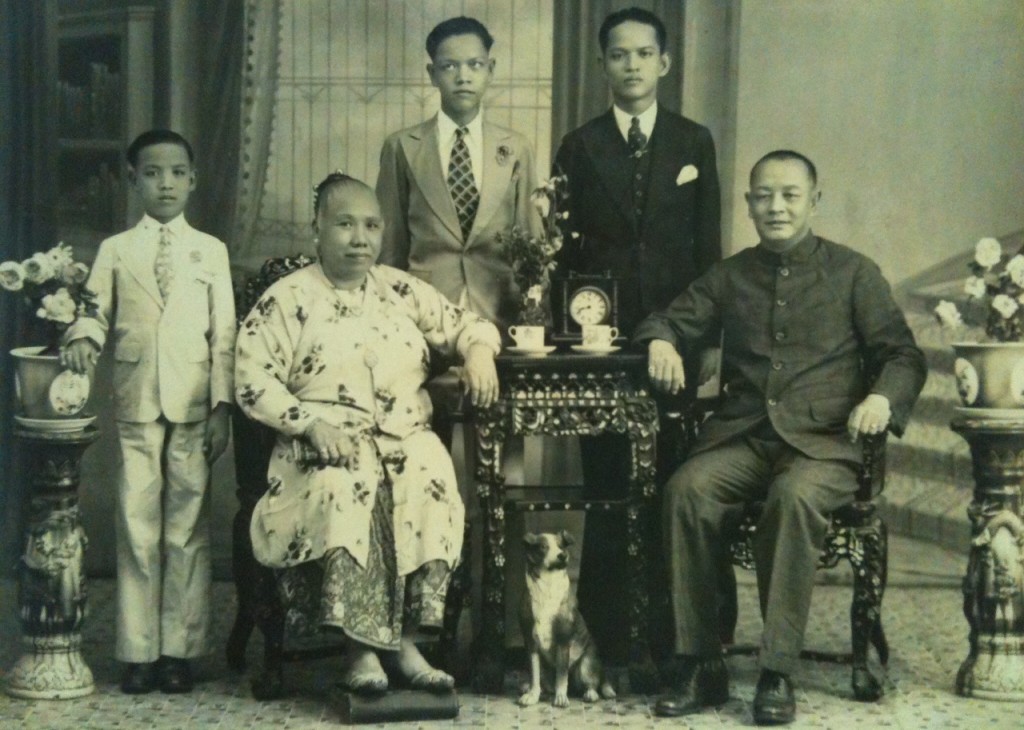
My father on the extreme left beside his mother (my grandma) and next to her my Uncle Tan Kim Cheng who was lost to Sook Ching ( Family Album )
Antique Display Shelf (博古架)
by Ang Yik Han
The term “bo gu” (博古) is derived from an inventory of antiques stored in the Xuanhe Palace commissioned by the Song Emperor Huizong. The published compilation consisting of 30 volumes was titled “bo gu tu”( 博古图) or diagrams of antiques. Subsequently, the shelves used in the Song palaces to display choice antiques came to be known as “bo gu” shelves. Over time, such shelves became popular outside of the royal court and appeared in the homes of the landed gentry, where they were used in studies and other private spaces to display antiques, curios and art pieces. Ranging in size from cabinets to small tabletop display racks, they still provide an Oriental touch for many homes today.
In Chinese art, antique display shelves containing various items with auspicious or felicitious connotations often appear as decorative motifs. However, few have been observed as tomb decorations at Bukit Brown. A rare pair can be seen at Ong Sam Leong’s tomb on the carved panels adjoining the Earth Deity’s altar.
The following objects can be seen on the panel on the left (from right to left)
- a vase with peony flowers – peace and prosperity.
- a tripod fruit platter containing a peach, a pumpkin and a citron – the fruits symbolise longevity, fertility (especially male offspring) and happiness. Collectively, they are known as the “3 Abundances”.
- what seems to be a Western clock – this may be an admonition to descendants to be mindful of time which waits for no man.
Those on the right panel are (from left to right)
- a censer with threading incense smoke above – fertility and generations which go on and on
- a container with a staff from which hangs a chime (bell) in the an “ao yu” or dragon fish – the character for chime in Mandarin is phonetically similar to “wishing” and the “ao yu” finds common use in an idiom which means “to be the best” (独占鳌头), so this could be an expression of wishing (descendants) to take the lead in all their endeavours
- a container with what seems to be a pair of forceps used with incense
- what looks like a branch from a plum tree – the plum blossom is admired for its resilience so this could be the implied meaning here
This is another example of the fine tomb sculpture which adds to the elegance of the tombs of Bukit Brown.
Editor’s Footnote : The same features were discovered on a tomb in the deep undergrowth of Lau Sua by Brownies exploring the area. Clothed in moss, the features are still discernible and the tomb itself is pretty grand!
Through time and distance, Grace Seah remembers and pays tribute to her grandparents buried in Bukit Brown.
“To forget one’s ancestors is to be a brook without a source, a tree without root”
(Chinese proverb)
As a young girl, I remember accompanying my parents to Bukit Brown Cemetery to pay respects to my late grandparents every Qing Ming. It was always an exciting time for me, folding the paper money into boat shapes, helping to trim the overgrown vegetation around the tombs, sweeping the surrounds and running around admiring the neighbouring tombs.
As the years went by, I gradually stopped attending to this annual ritual and left it entirely to my parents to do their filial duty on their own. My life took on a momentum of its own that left me with hardly any time to think about my ancestry and heritage and old traditions of my childhood. In time, I moved to another country to set up home there with my own family.
With the sense of loss I felt during the first few years of settling into my adopted country, there was renewed impetus to capture and treasure the precious memories of my Peranakan heritage and family mementos. The one memory I had of my grandparents was this beautiful old photo taken around the year 1934. It shows my paternal grandparents with my father, their youngest son and his 2 elder brothers.
I never grew up knowing my Mama and Kong Kong as they passed from this world before I could remember much. However, I have always felt particularly drawn to them through this photo. It was as if they were always smiling at me. I grew to love this special family photo with all my heart.
In this family photo are:
The matriarch and patriarch are my paternal grandparents. Both were buried in Bukit Brown. My father is the youngest boy in the picture. The dapper young gentleman in the black suit is his 2nd brother Tan Kim Teck and my 3rd uncle Tan Kim Cheng is in the middle. In those days daughters were not part of the family photos. One of my dad’s sisters Tan Imm Neo eventually married Cheang Theam Chu, son of Cheang Jim Chuan and grandson of Cheang Hong Lim.
My grandparents came from humble backgrounds but worked hard to raise a large family in the Peranakan tradition of those times. My grandfather passed away in 1946 and my grandmother single-handedly presided as the matriarch in the family until her death in 1964.
Through a series of coincidences and unexpected events, I was one day led to the amazing work being done by the Bukit Brown community to preserve the heritage that is Bukit Brown. Suddenly memories of all that I loved about Bukit Brown and memories of visits to my grandparents graves came rushing back at such a speed that it left me breathless. For reasons that only God and the Universe understand, I was given this one last chance to help locate the tombs of my grandparents before the government deadline of 31 Dec 2012.
It was a family photo that started the chain of events identifying my grandparents’ tombs. It was an unbelievable feeling when I finally reconnected with them. My 88-year-old father was also pleasantly surprised with the discovery, as with age, he had himself lost touch with his parents’ graves at BB.
I would like to think that Mama & Kong Kong had a hand in making all this happen. Who would have thought that this beautiful family photograph would be the key to ensuring that their earthly remains will finally be laid to rest permanently amongst the others, in a special place, never to be forgotten again.
Editors note : The tombs of Tan Keng Kiat and Chan Gin Neo are staked and will have to be exhumed to make way for the eight-lane highway. When Grace Seah posted a request on the Facebook page to help find their tombs, the response was near instantaneous, as Brownie Ee Hoon had remembered taking photos of the tombs and noting its unique features.
Seah Eu Chin (1805-1883)
Singapore’s Pioneer Gambier and Pepper Plantation King
Founder of Ngee Ann Kongsi
It started with a breaking news flash on the Heritage Singapore Bukit Brown Cemetery Facebook page posted by Raymond Goh just after 2 pm on Friday 16 November 2012:
“Breaking news….the Goh Brothers have found the triple tomb of one of foremost Teochew pioneers of Singapore – Seah Eu Chin and his two wives, sisters of Tan Seng Poh. Details to follow…”
This was followed by the first photo of the tomb described as :
“Tomb of Seah Eu Chin, founder of Ngee Ann Kongsi, with his two wives Tan Beng Guat and Tan Beng Choo. Eu Chin passed away in 1883. We will take exact measurements tomorrow, but his tomb is believed to be as big as Ong Sam Leong.
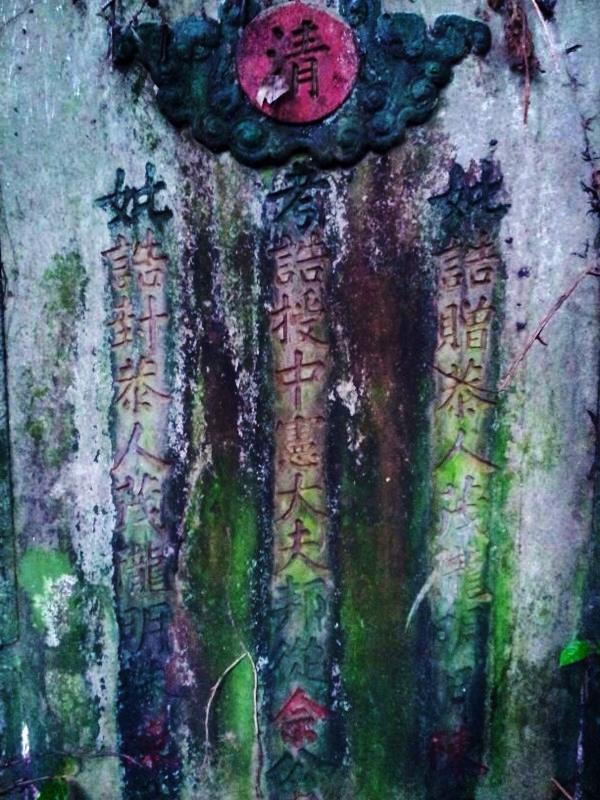
Tomb of Seah Eu Chin, founder of Ngee Ann Kongsi, with his two wives Tan Beng Guat and Tan Beng Choo. (photo Raymond Goh)
The tomb inscriptions included imperial titles, but Raymond reports, reading the inscriptions is proving a challenge as some of characters are missing. The lettering is done with some kind of metal which has fallen off.
This is Charles’ account of the search for Seah Eu Chin
“Like the previous finds of Ann Siang and the elder Gan, minutes before the find, there will be rain. For Seah, there were additional ‘help’. On the 1st day, a cobra reared its head preventing us from going one way. Another hissed to stop our tracks when we tried another way. And we met a monitor lizard on the start of the 3rd route. Thinking something’s wrong, we stopped our search minutes after we started. (After Eu Chin’s find, we knew we had went the wrong side of the hill then.) The 2nd day we tried a new location. The trek was smooth, and when rain fell, a sense of hope, and there rose a feeling that something was right. We found it in 10 minutes.”
The next morning, the Goh brothers were back at the grave and posted a photo of the grave in full glory:
The brothers have cleared a path towards the grave so his descendants, members of the Teochew Community and Brownies can visit later. The location of the grave is under wraps at the moment until such time as the descendant who made the request for help to find Seah Eu Chin is informed.
An extract on Seah Eu Chin from The Straits Times, 24 Sept 1932, Page 12
Chinese Benefactor of 1845 – Ngee Ann Kongsi:
In or about the year 1845 the late Seah Eu Chin, at that time a prominent Teochew merchant in Singapore and 12 other Teochew merchants then in Singapore, promoted the formation of a fund for the propagation and observance in Singapore of the doctrines, ceremonies, rites and customs of the chinese religions as observed by the Teochew community, a community of Chinese originating from certain districts in the Kwantung Province of China, and for other charitable purposes for the benefit of the members for the time being in Singapore of the Teochew community…
There is a blog post on Seah Eu Chin here.
Related Post:
For the Love of Flowers – The 4 Loves
by Yik Han
Amongst the fine tomb sculpture found in Bukit Brown are depictions of men in the company of flowers. Lest one gets the wrong impression, these are actually based on four historical personalities from ancient China. Collectively, the carvings form a set known as the “4 Loves”.
The peony (牡丹) is known as the king of flowers not without good reason. During the reign of Emperor Xuanzhong (唐玄宗), the Tang Dynasty was at the height of its power. The opulence of the Tang capital, Changan, was known far and wide and the residents lived a lavish life of luxury. The Emperor was a lover of the peony and his palace was filled with breeds from all over the empire. His fondness for the flower was only surpassed by his affection for his favourite consort. At a palace banquet to celebrate the full bloom of the peonies, the Emperor called upon the poet Li Bai to compose a poem fit for the occasion. The intrepid Li Bai readily came up with a verse which likened the beauty of the flower to that of the Lady. This lady, who was to inspire poems through the ages, was none other than Royal Concubine Yang (杨贵妃), one of the four classical beauties of ancient China. She was to meet an ignominious end when disgruntled generals demanded that she be put to death. Till today, the vivacious peony retains its traditional association with wealth and prosperity.

The Emperor is easily recognized by his stately robes, and his palace attendants hover near as he admires his beloved peonies. (photo Yik Han)
In contrast with the celebration of the material life during the Tang, learned men of the Song Dynasty advocated the cultivation of the inner spirit. A weak and corrupt administration coupled with reverses against foes abroad led to many shunning officialdom, preferring instead the life of a recluse to uphold one’s principles and dignity. The favoured flower of this period was the plum blossom (梅). Its delicate feminine beauty belied the indomitable spirit attributed to it as it blooms during the harsh winter months. The story of Lin Bu (林逋) and his beloved plum blossoms epitomised this trend. Lin, who lived a simple and quiet life during the Song Dynasty (960-1279), was interested in neither fame nor riches. A bachelor all his life, he indulged himself in cultivating plum trees and rearing cranes to such an extent that his contemporaries said that “the plum tree is as his wife and the cranes his children”. The plum blossom’s stoic beauty saw its adoption as the national flower of the Republic of China (ROC) in 1928.
Unlike the plum blossom with its lofty attributes, the chrysanthemum is a much simpler creature which represents the carefree life. Tao Yuanming (陶渊明) was a Song Dynasty poet who chose to stay aloof from court intrigues and retired to spend his days with his beloved chrysanthemum flowers. The state of mind which transcends all cares has been captured in his own verse.
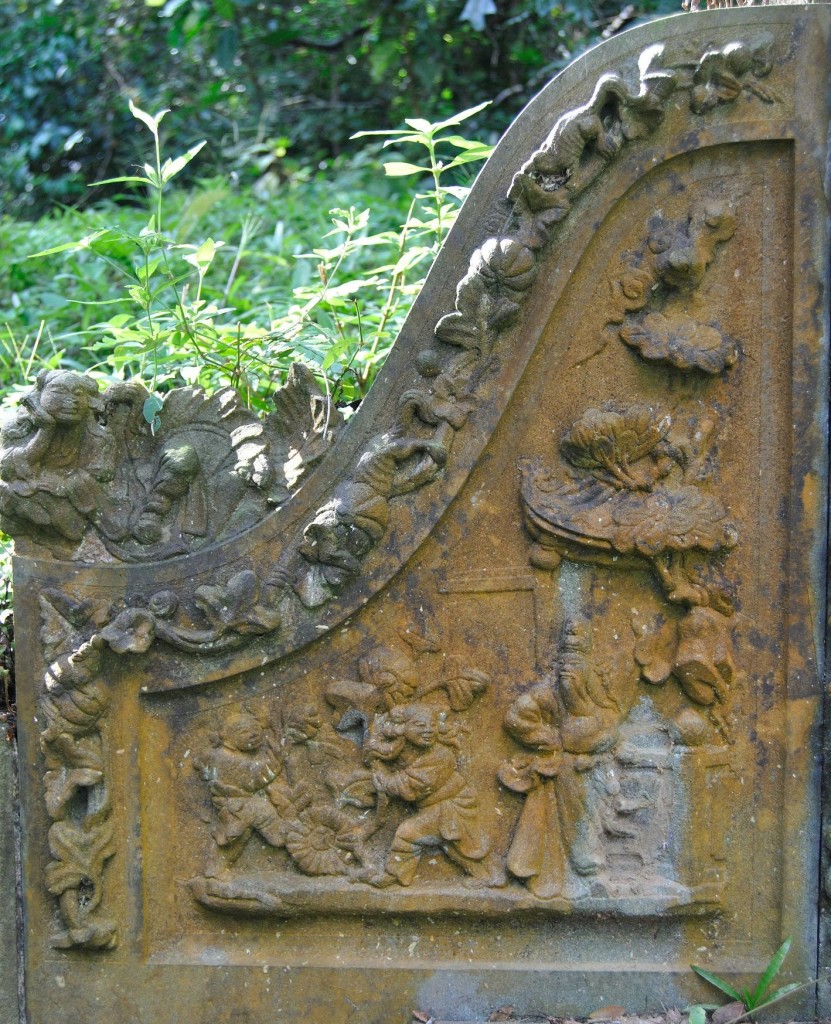
Tao Yuanming in his humble garb tending to his chrysanthemums, easily recognisable by their many petals.(photo Yik Han)
采菊东篱下 悠然见南山
“While picking asters ‘neath the Eastern fence
My gaze upon the Southern mountain rests”
(Translation by Yang Xianyi and Gladys Taylor)
The last of the quartet, the lotus is known for its association with the Song philosopher Zhou Dunyi’s (周敦颐). The “Ode to the Lotus”, arguably his most popular verse, explains his preference for the lotus above all other flowers.
自李唐來,世人甚爱牡丹。予独爱莲之出于泥而不染,濯清涟而不妖 。
“Since the Tang Dynasty, many love the peony. My fondness is solely for the lily as it stays pure even though it grows in mud. After cleansing with water, it does not become bewitching.”
The lotus flower has often been taken as an allegory of how a gentleman should behave, abiding by his principles while navigating the treacherous paths of the world.
In Bukit Brown, carved panels depicting the “4 Loves” can be found on the shoulders (the stone slabs adjoining the tombstone) of tombs from the 1920s and 30s. Usually, only two of the flowers are depicted; only where there are double tombs with four tomb shoulders to utilise will the full set be present. One of these rare examples is the double tomb of Tok Cheng Tuan and his wife which is due to make way for the new highway.
The four flowers have an additional association with the seasons as they are supposed to bloom at different times: lotus (summer ), peony (spring), chrysanthemum (autumn), plum (winter). This is thematically similar to the grouping “Four Friends of the Seasons”, a favoured theme for objects adorning the study and implements of the literati, in which the bamboo is substituted for the peony. In addition, a variant of the “4 Loves” encountered in traditional Chinese art uses the association of the poet Su Dongpo with ink stones or geese. This variant has yet to be encountered in Bukit Brown.
Other posts by Yik Han on tomb aesthetics:
They are among the world’s brightest, nominated for leadership, talent and contributions in the social and economic spheres to the World Economic Forum of Young Global Leaders.
40 of them dropped in at Bukit Brown on 23 October 2012, as part of a programme there were attending at the Lee Kuan Yew School of Public Policy. Volunteer Guides, Claire, Catherine, Keng Kiat and Millie took them on a one hour and half tour which only managed to cover three tombs but we still covered a lot of ground in history, heritage and civil engagement.
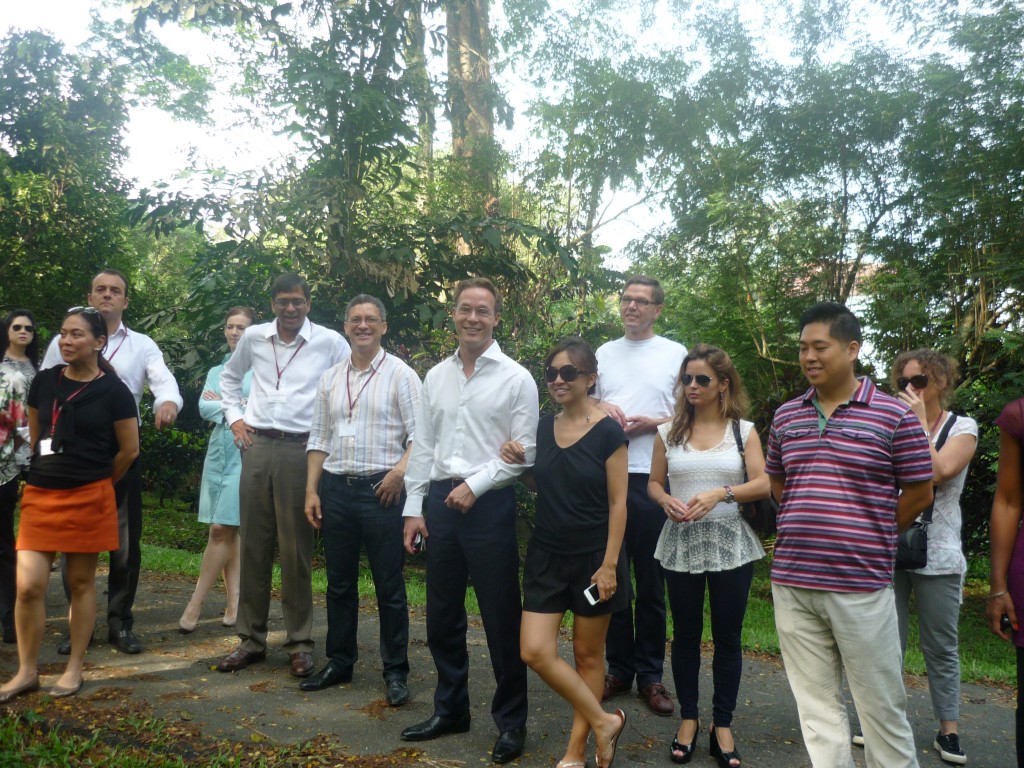
Our best dressed participants to date, and attentive. Impressed by the women who came in high heels and wedgies who climbed with us (photo Catherine)

A wheel chair participant getting assistance from his team members to the tomb of Ong Sam Leong located at the highest point in Bukit Brown (photo Catherine)

Mates Jaime and Marco help Christian get up to see Ong Sam Leong’s grave, with his wife making sure all are in good shape (Photo: Claire Leow)

Back into the classroom, and a robust discussion on development, after a short presentation of Singapore History from colonial times when civil society had much to contribute under the British” laissez faire” adminstration compared to present times, when the state has stepped in with providing more social services. Vice Dean of Academic Affairs, Kenneth Tan helmed the one hour session (photo Catherine)
The Dragon King, The Emperor and a New Wife….
The most spectacular cluster of tombs at Bukit Brown belonging to Ong Sam Leong and family is resplendent with carved panels which depict stories from epic Chinese classics.
Ang Yik Han shares 2 panels of a story in the Chinese classic “Journey to the West”
Panel 1 from:
“After touring the underworld, the spirit of Emperor Taizong returns”
游地府太宗还魂
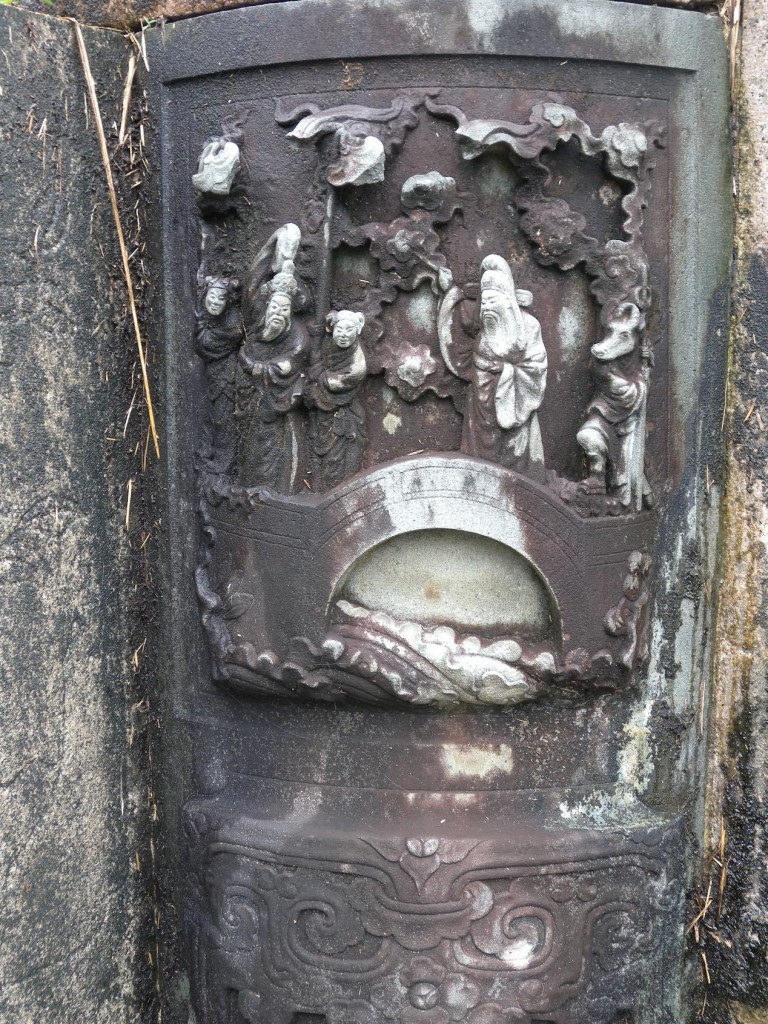
Underworld official adds 2 strokes to character as Emperor flanked by 2 companions look on (photo Yik Han)
Background: One of the dragon kings ran afoul of celestial law and was sentenced to be executed by an official at the Tang court. The desperate dragon turned to the then Emperor, Li Shiming (李世民), and beseeches him not to allow the official to go to sleep as that was the time the deed was supposed to be done. The Emperor agreed to help and promptly summoned the official to play chess overnight with him. During the game however, the official dozed off and in that short interval his spirit went off and slew the dragon king.
进瓜果刘全续配
October 13 saw volunteer guides, Walter Lim, Yik Han, Keng Kiat and Ee Hoon guiding 2 groups on a special Tong Meng Hui (TMH) Tour for museum docents and students from Pioneer JC working on a TMH project.
The tour was researched and designed by Walter who conducted the first Revolutonary tour in Mandarin also for museum docents. This TMH tour was adapted in English by the bi lingual brownie volunteer guides and co-ordinated by one f9 brownie, me 😉 The 2 tours were filmed for an upcoming documentary series on Bukit Brown.

Visiting Khoo Seok Wan, the hibiscus is always in bloom, the poet speaks through the poem he wrote for himself inscribed on his alter (photo Catherine Lim)
Read the poem here

Tie a red ribbon on a stake tomb? KSW tomb is in the way of the 8 lane highway (photo Catherine Lim)
The Republican Party was formed after the TMH. See Tiong Wah and Khoo Seok Wan are members. The party together with TMH are collectively part of the Reformation movement of new China after the fall of Qing Dynasty.
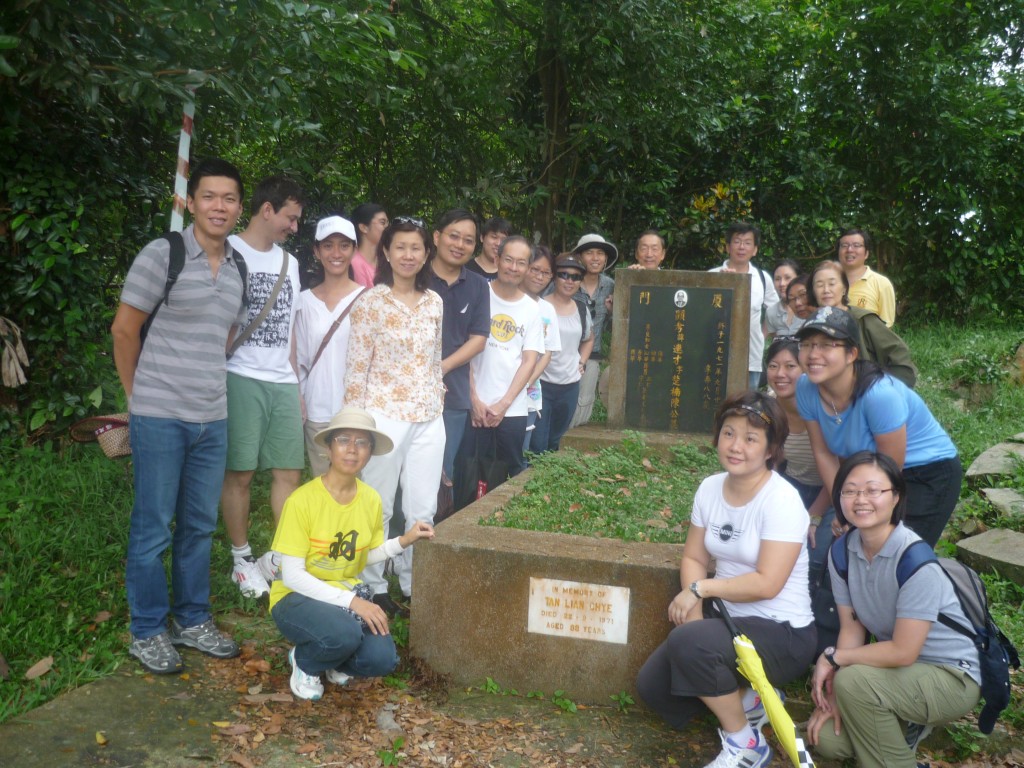
Tan Chor Nam, aka as Tan Lian Chye last and most significant stop for the docents. His photo with Sun Yat Sen is the first one which greets visitors at Sun Yat Sen Memorial Hall
The docents felt that visiting the TMH tombs helped to bring these pioneers alive and they have more stories to share when they next guide at the Sun Yat Sen Memorial Hall.
compiled by Catherine Lim
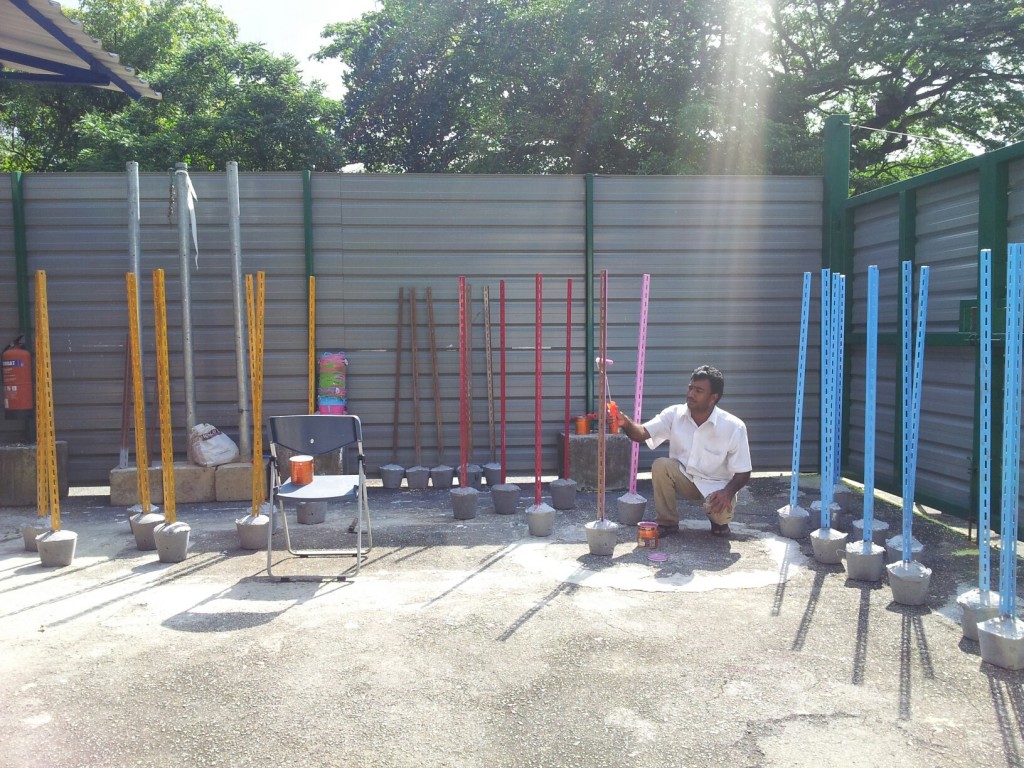
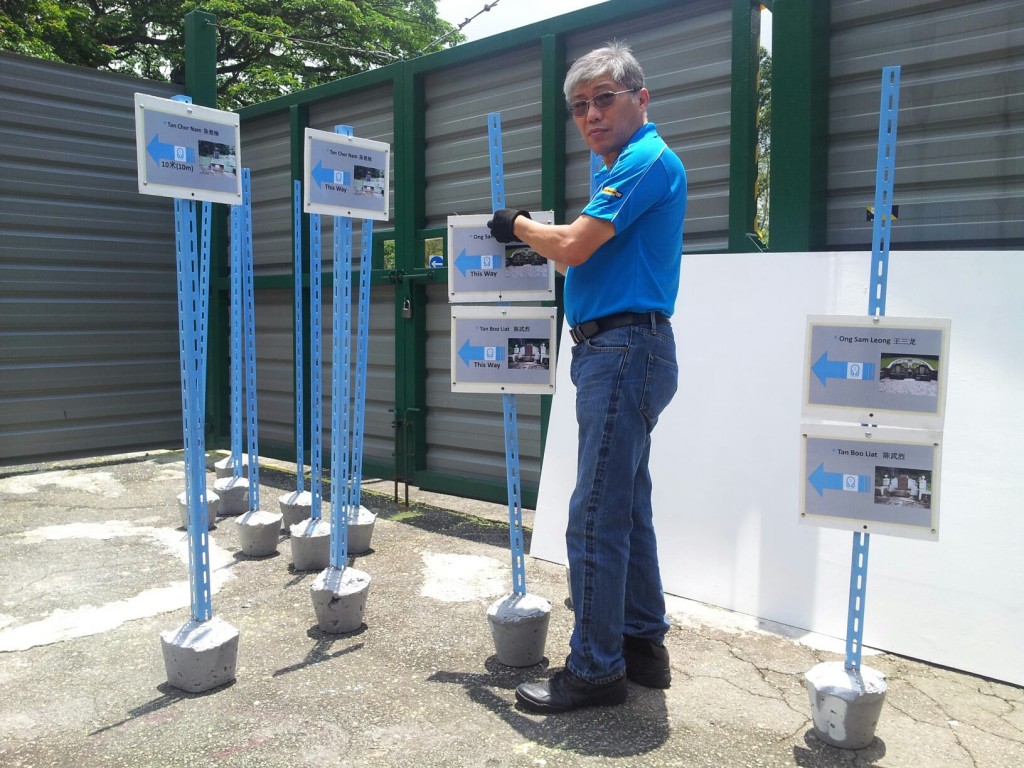
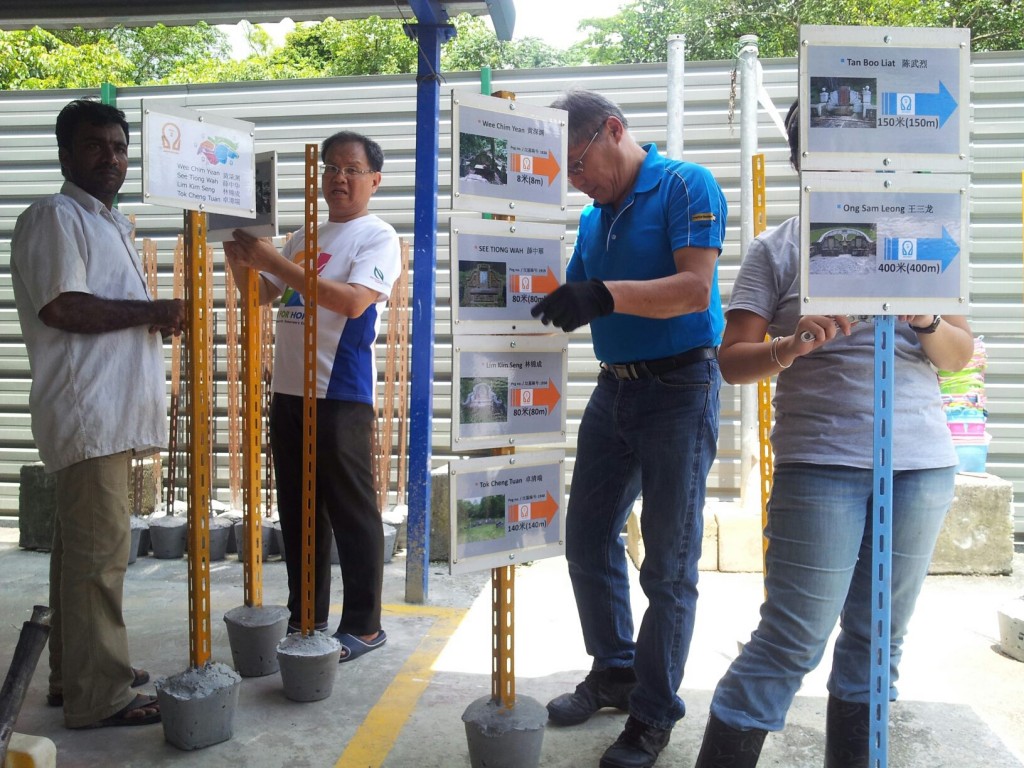
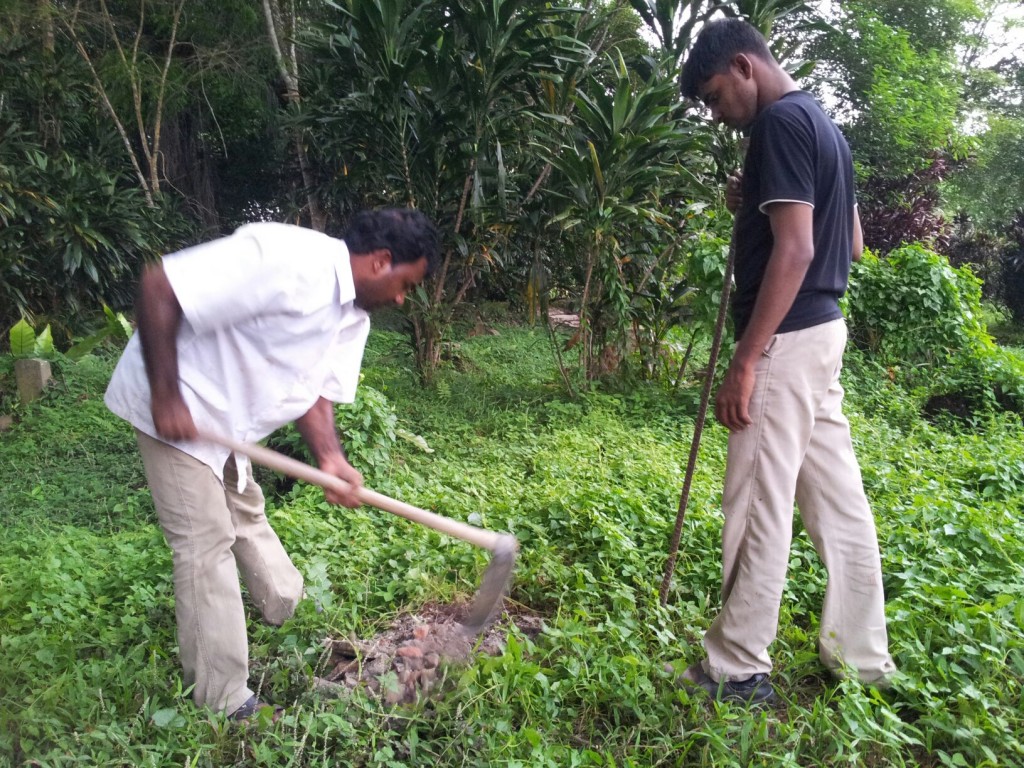
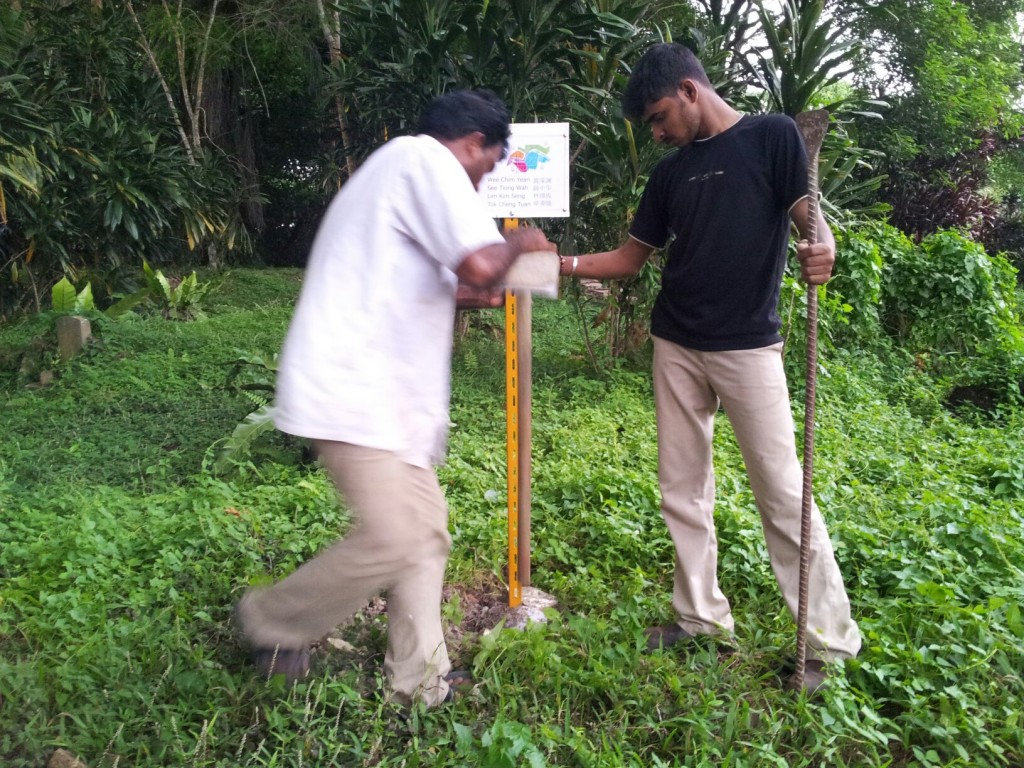

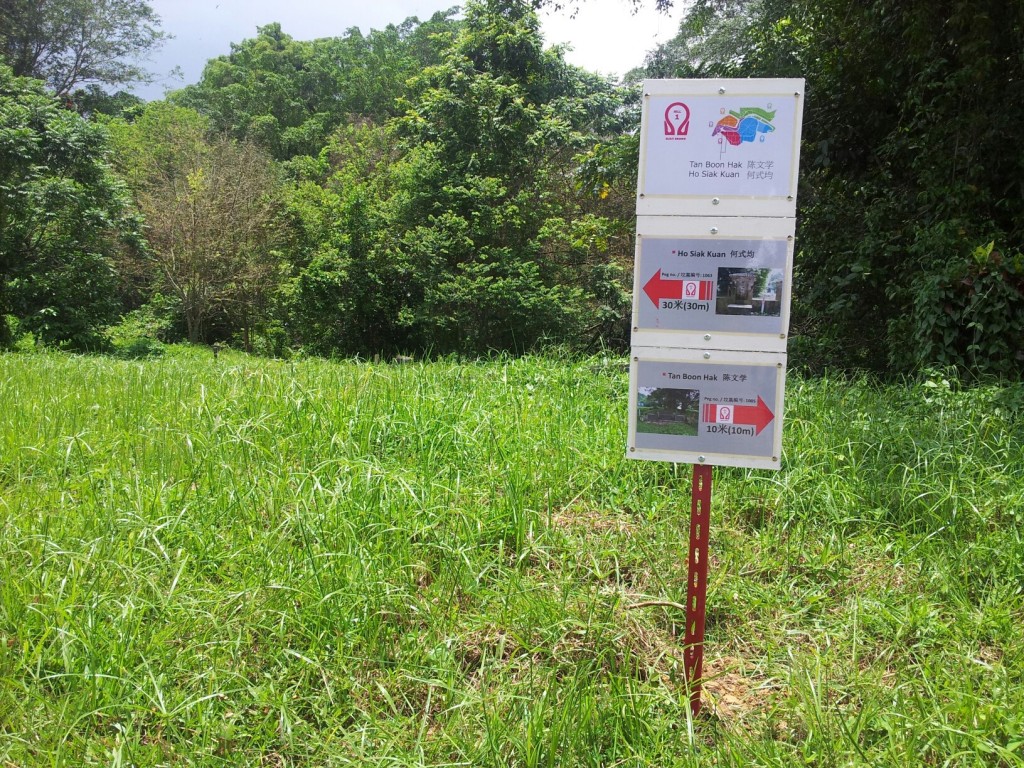

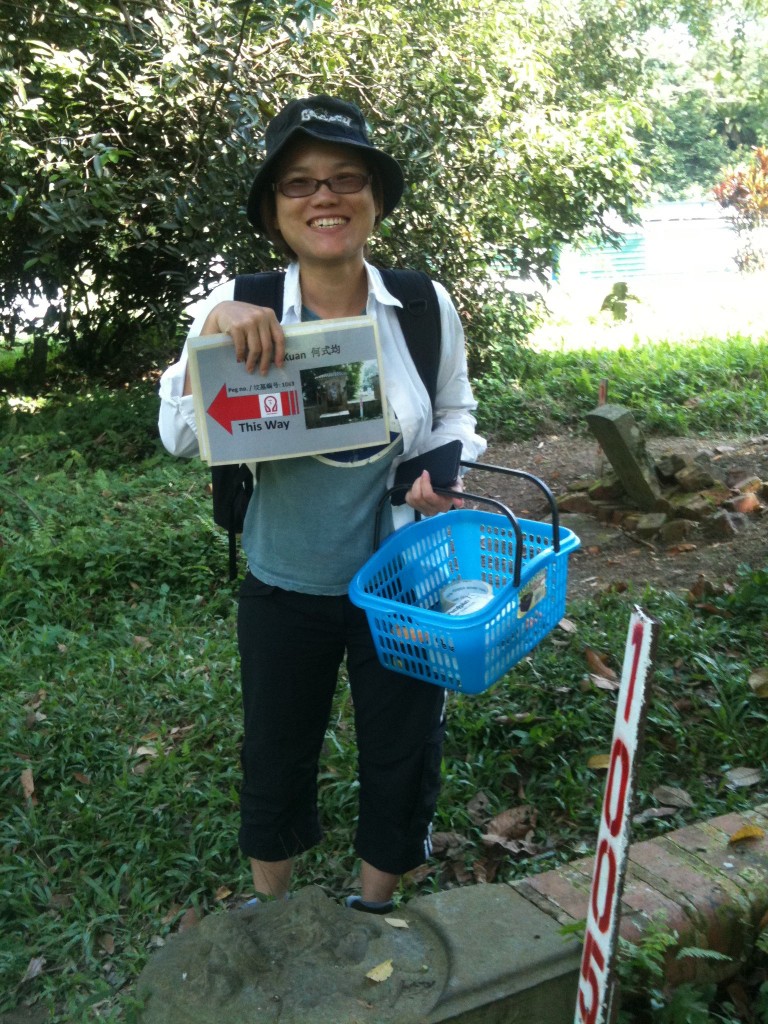



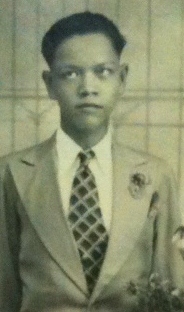

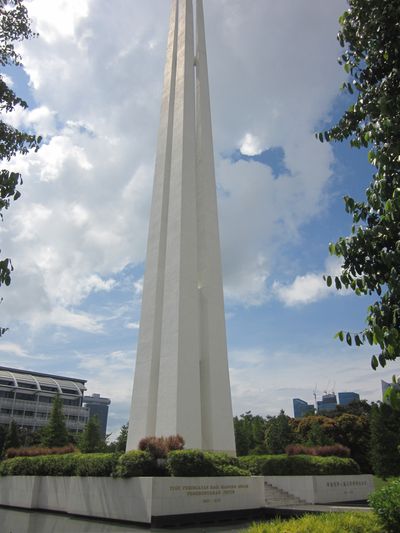
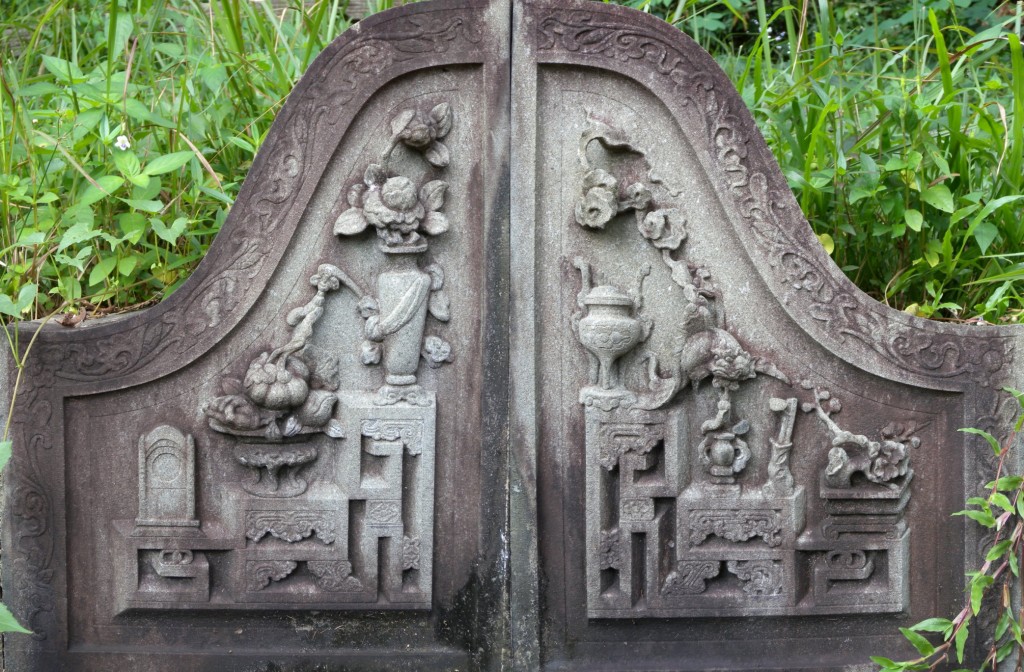
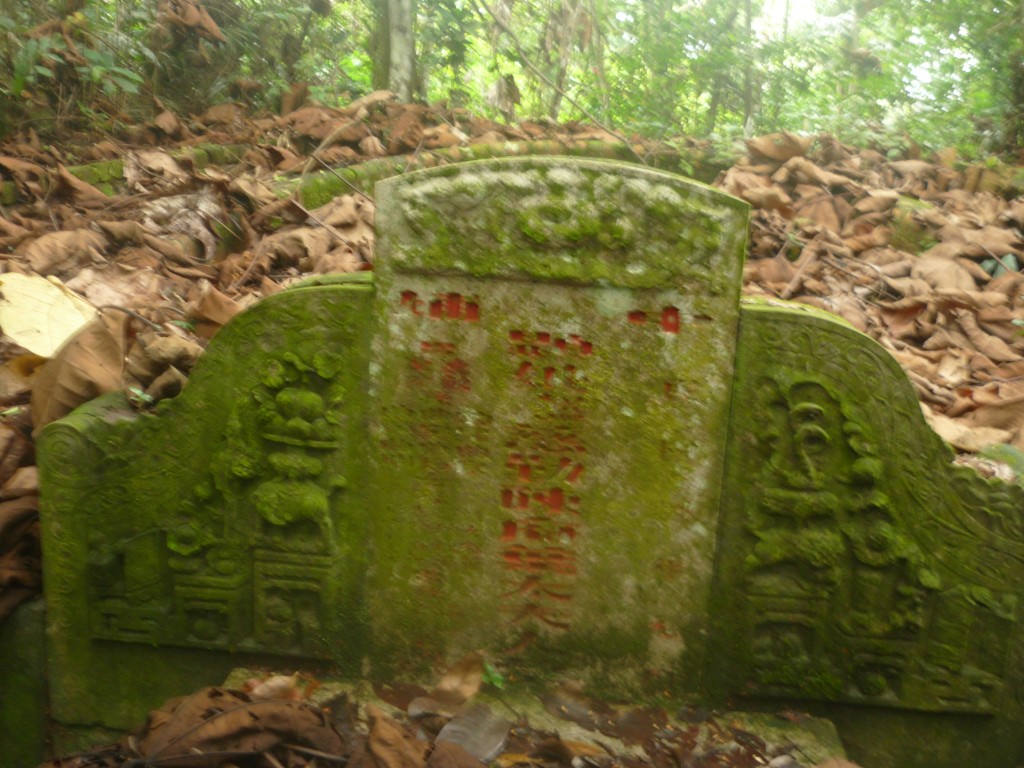
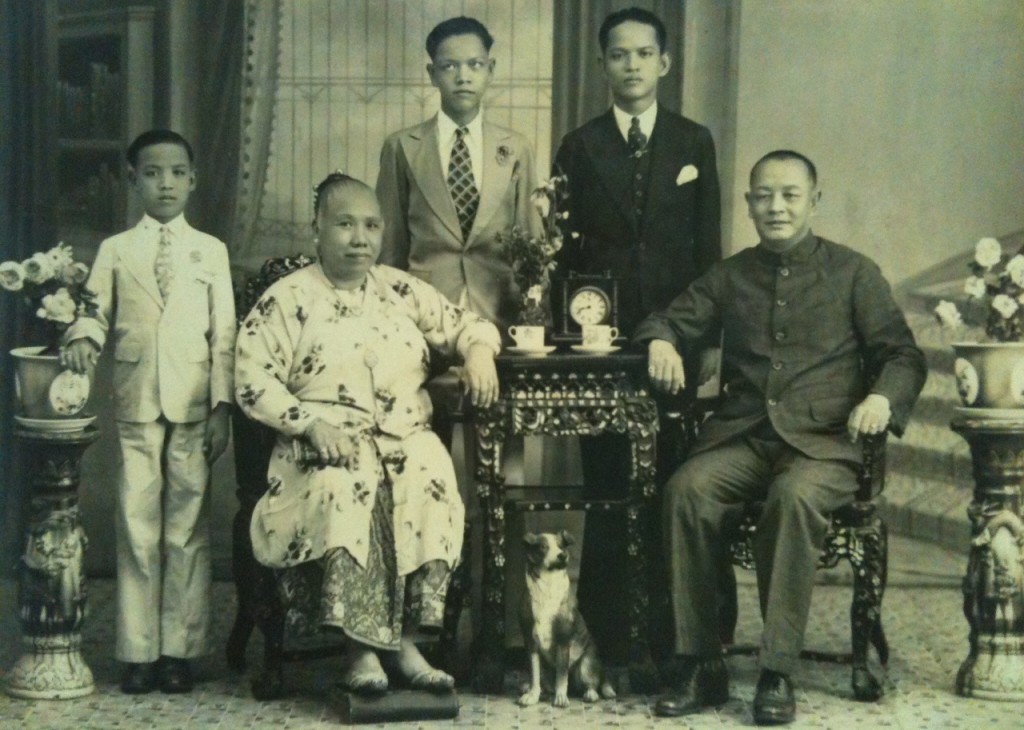
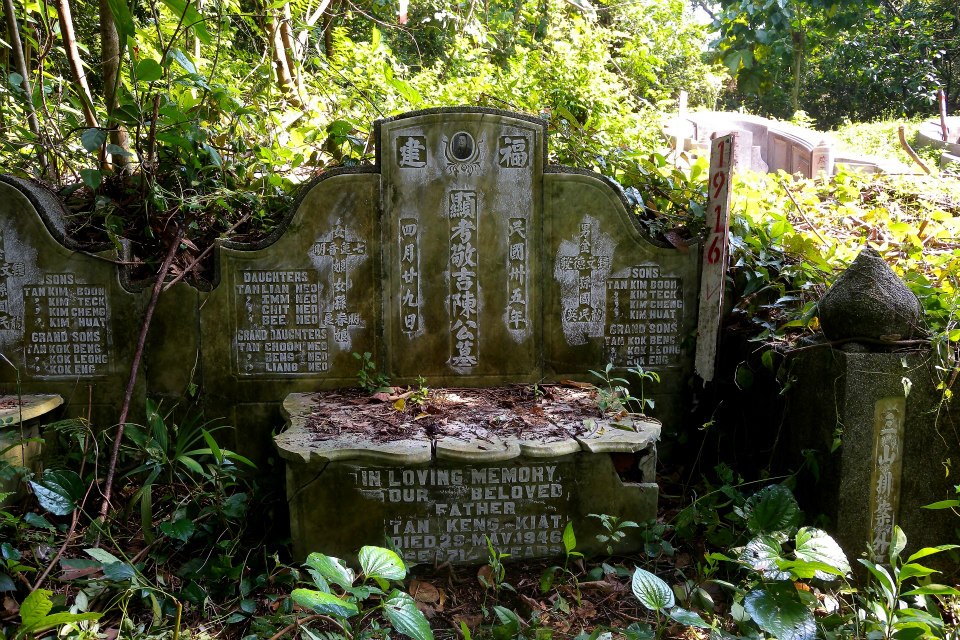
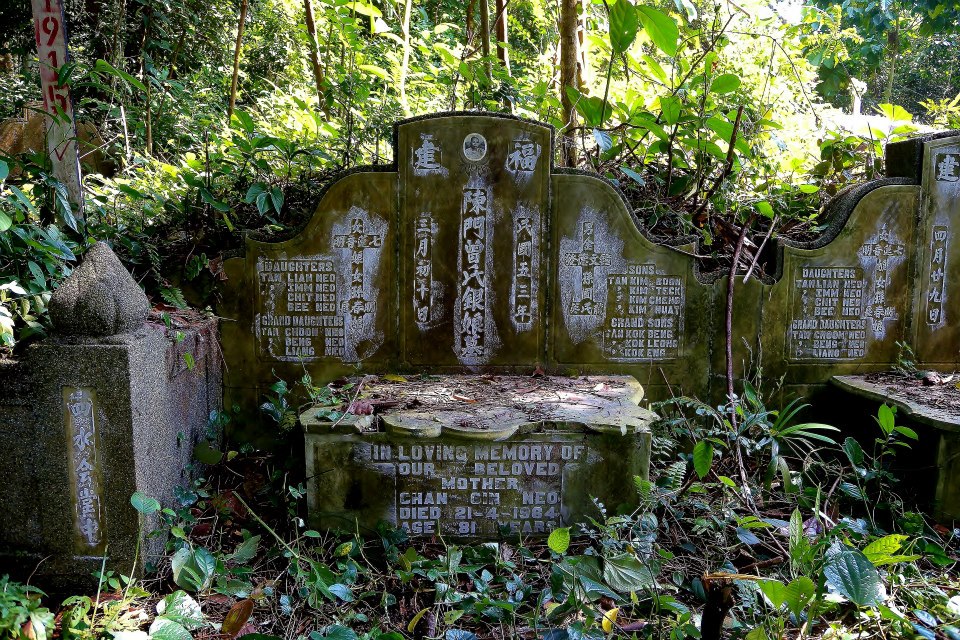
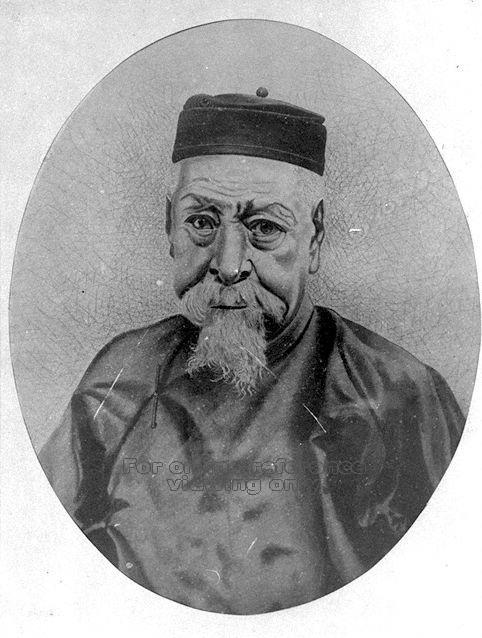
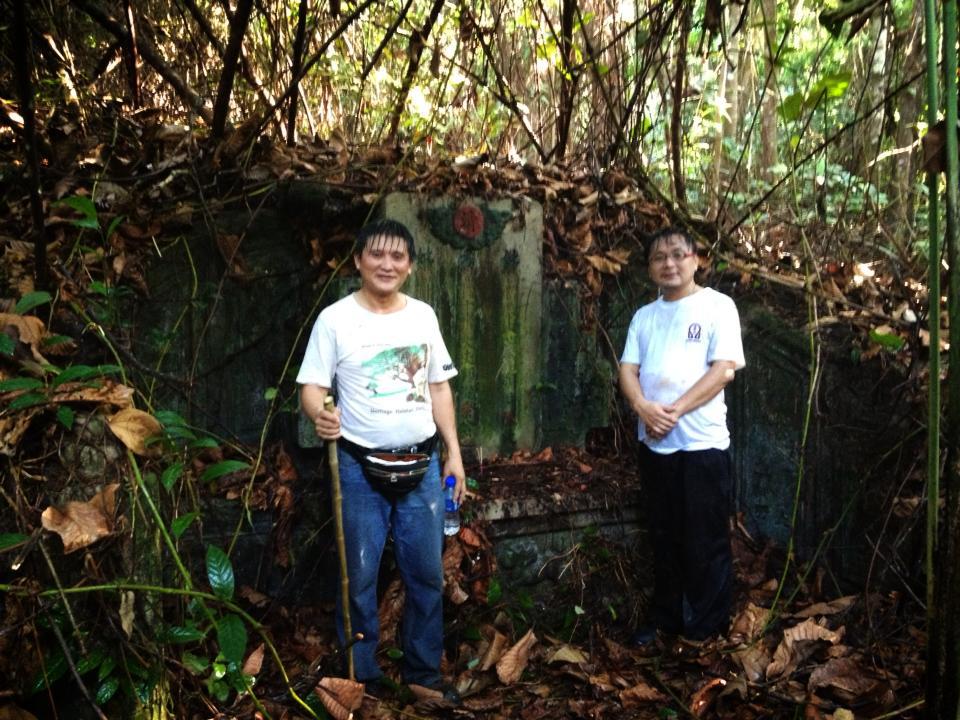


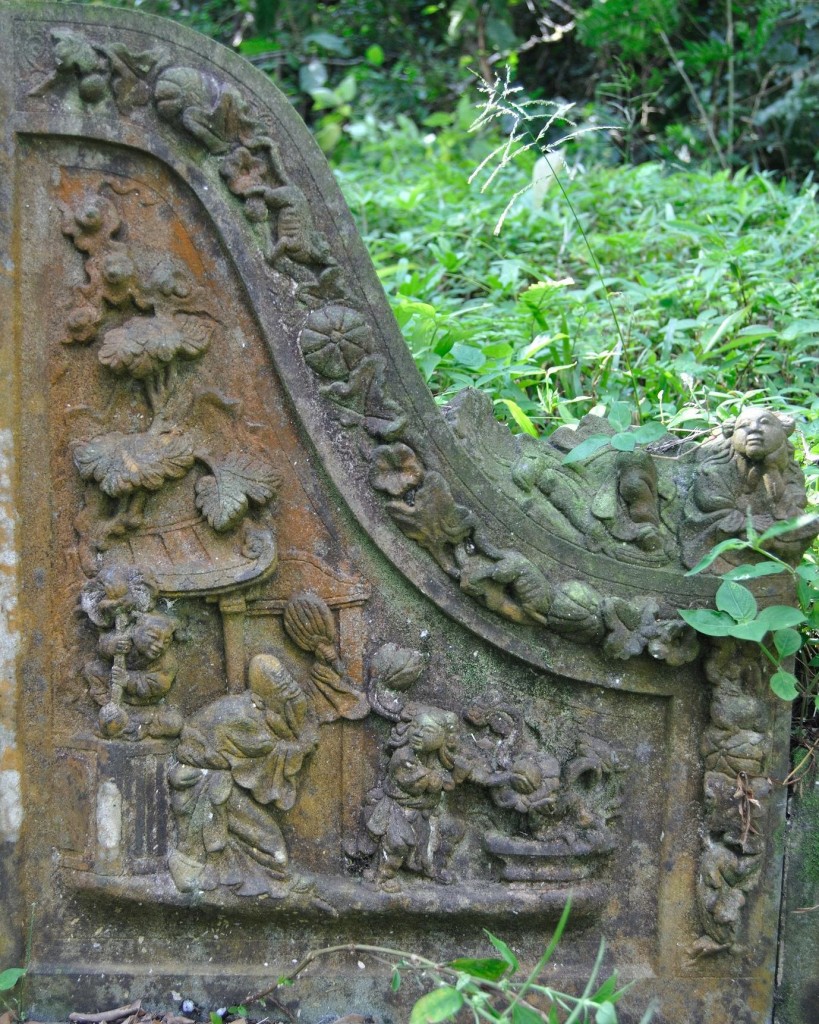

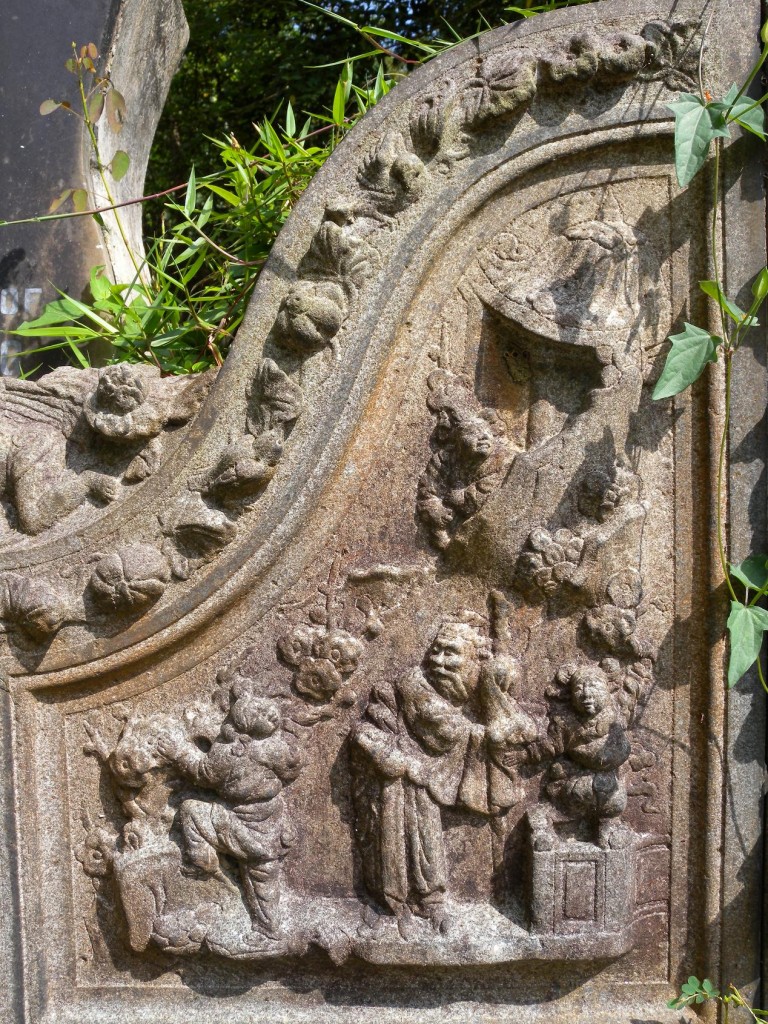

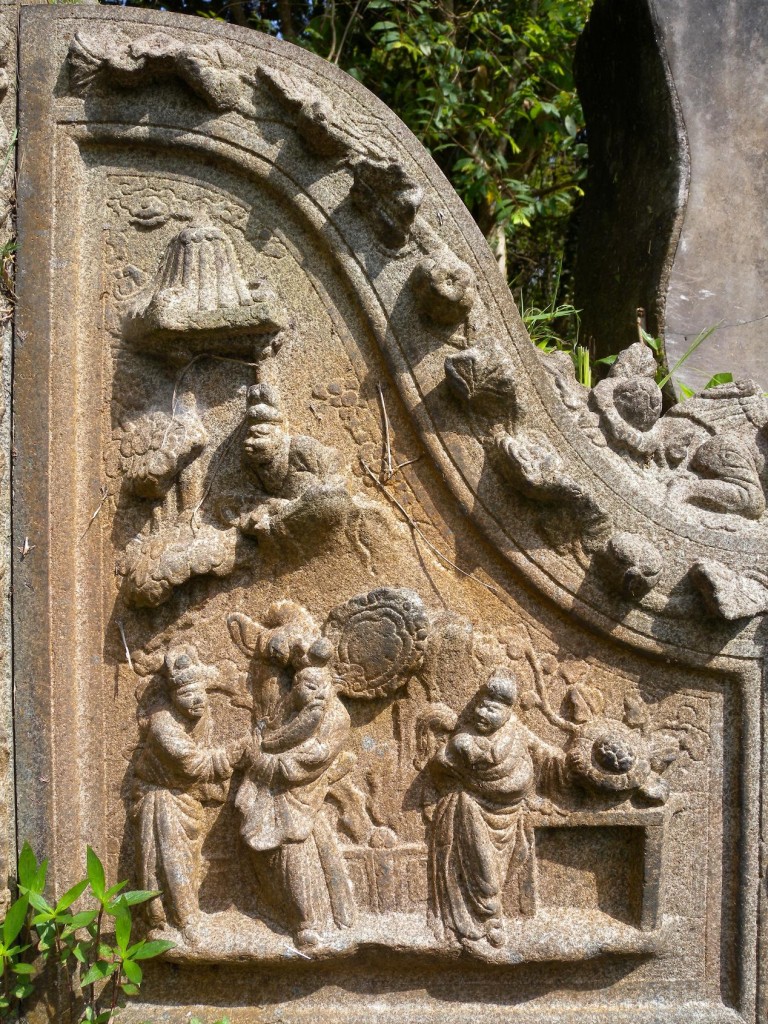

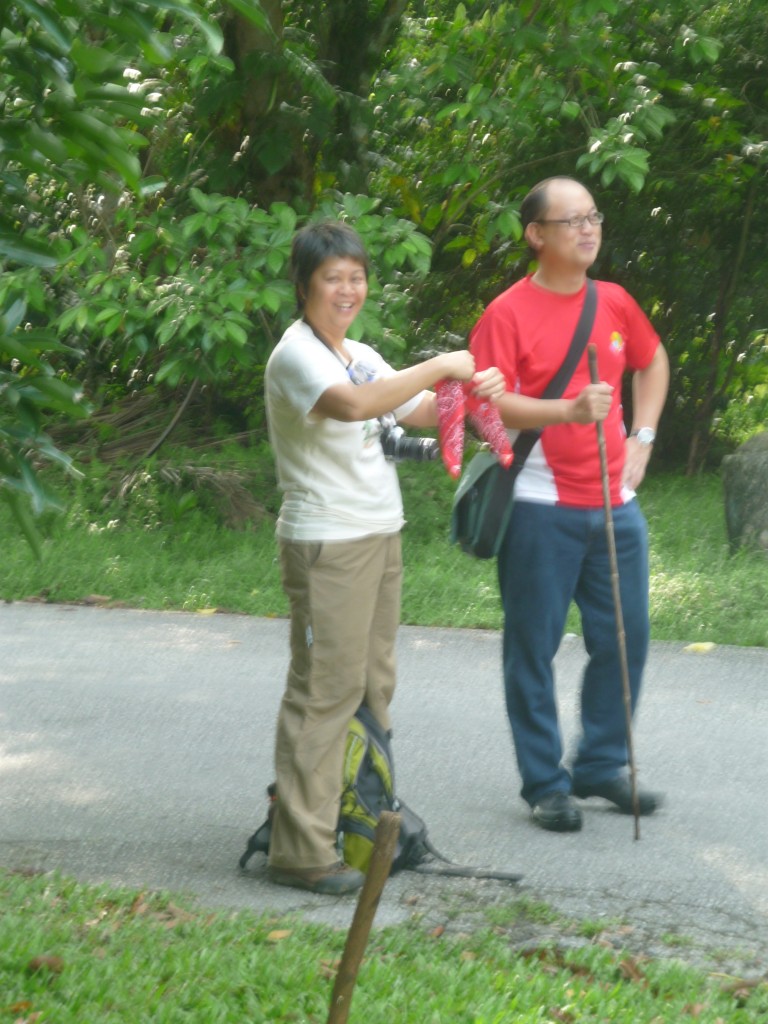

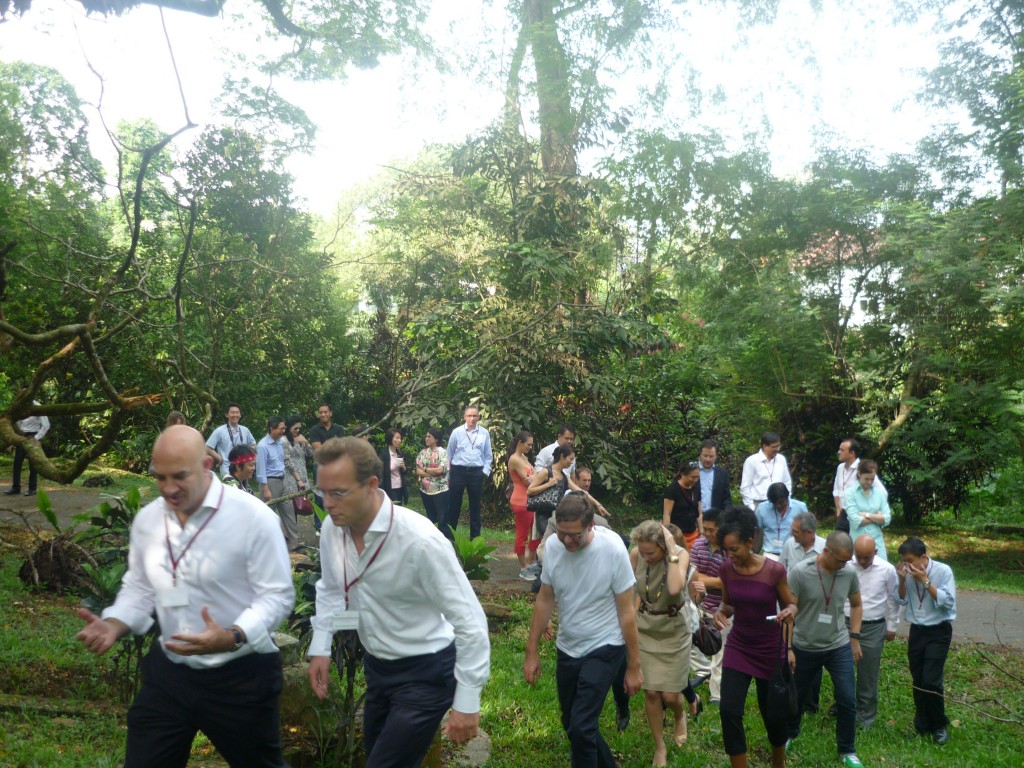
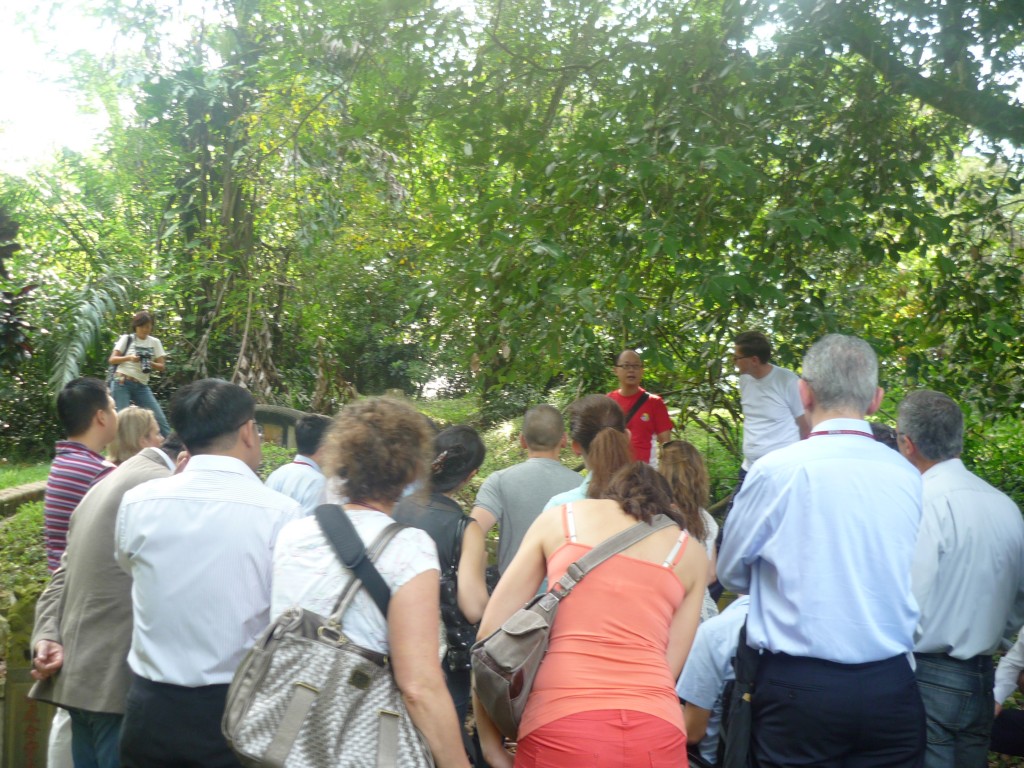


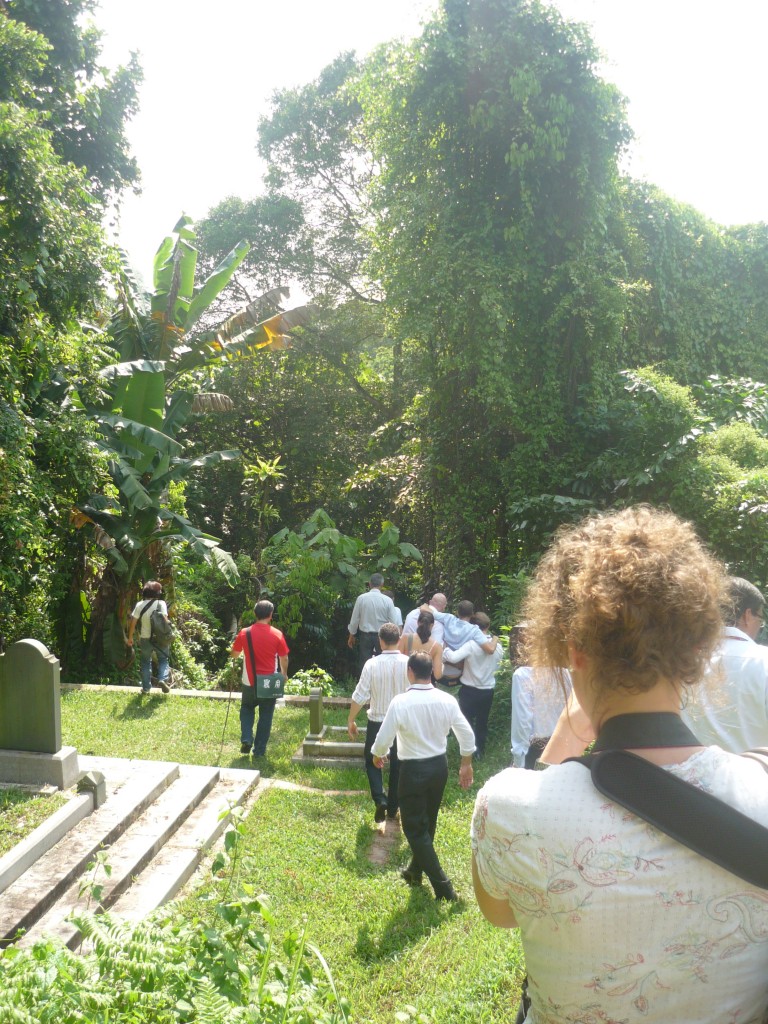

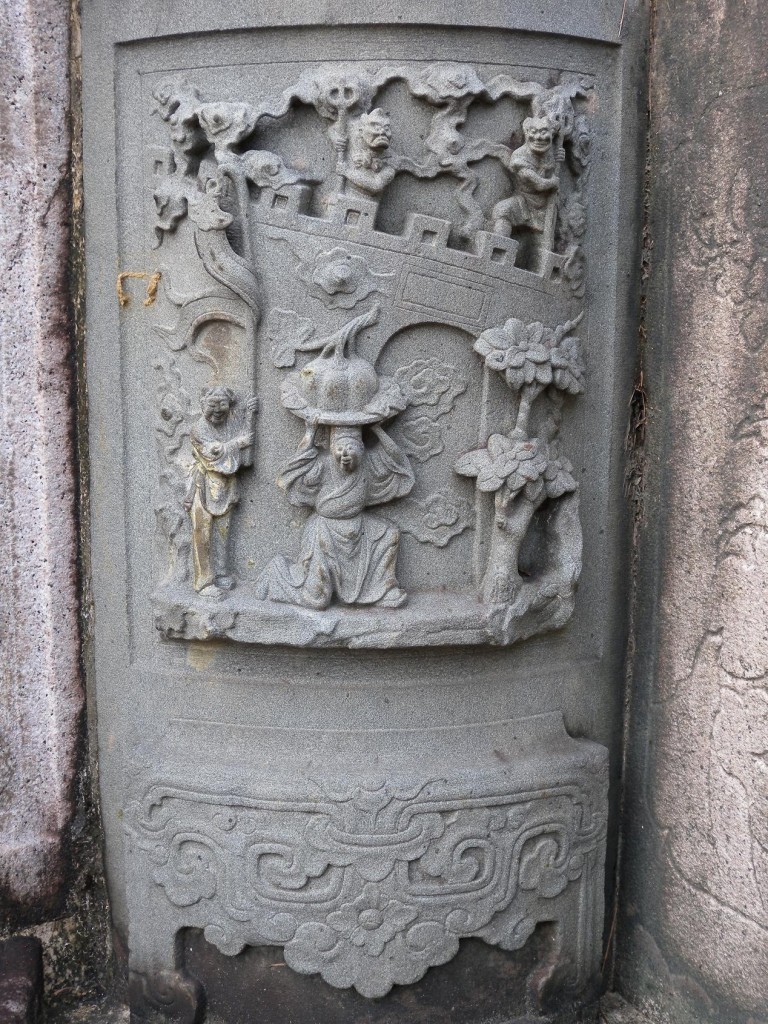
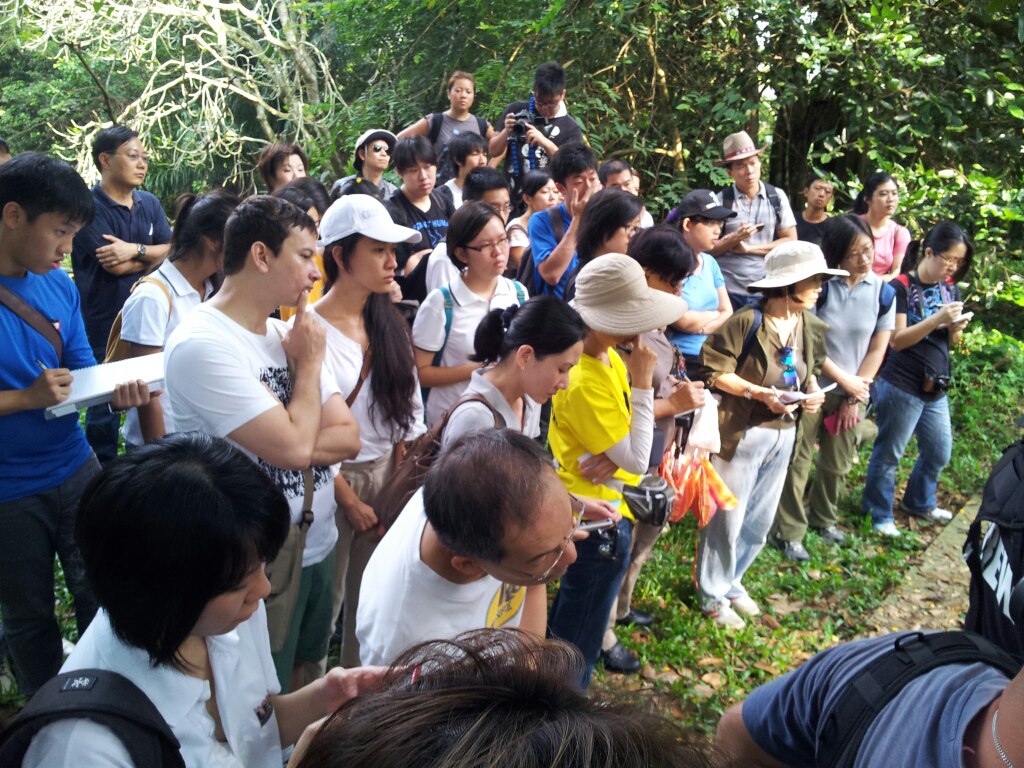

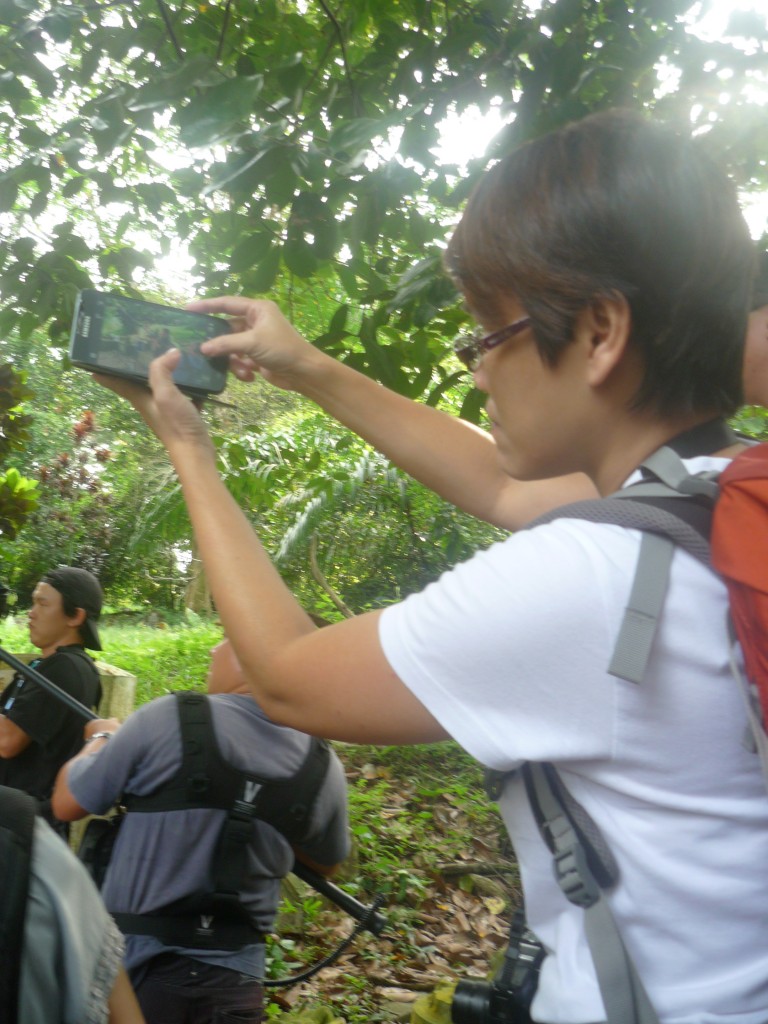
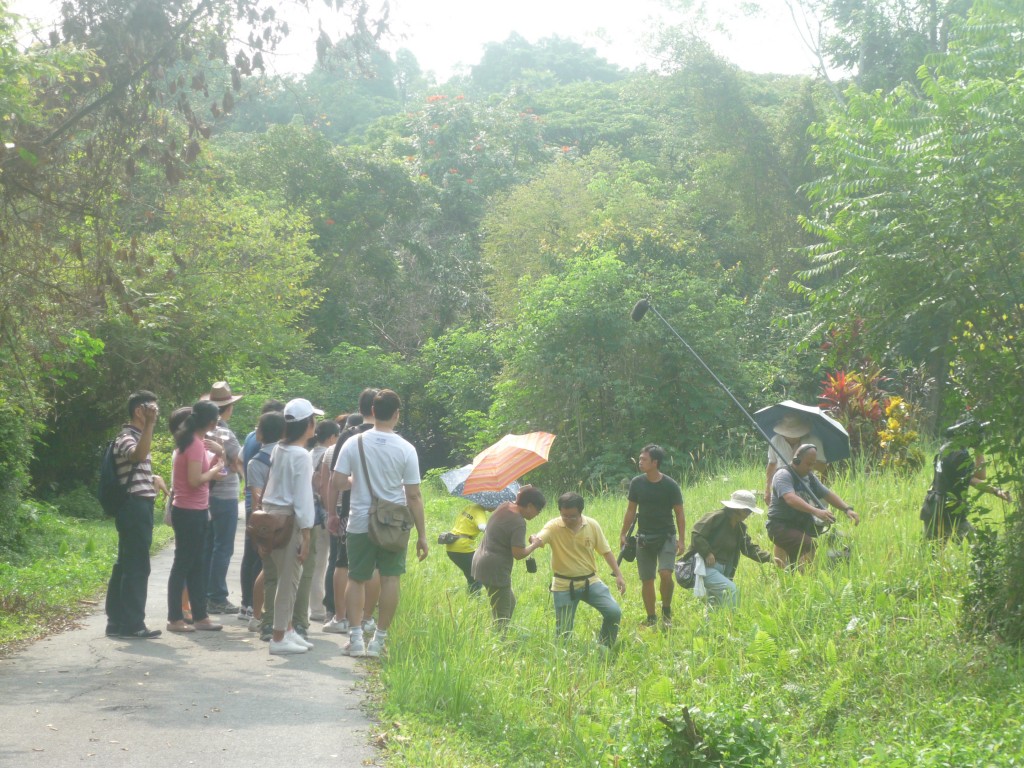

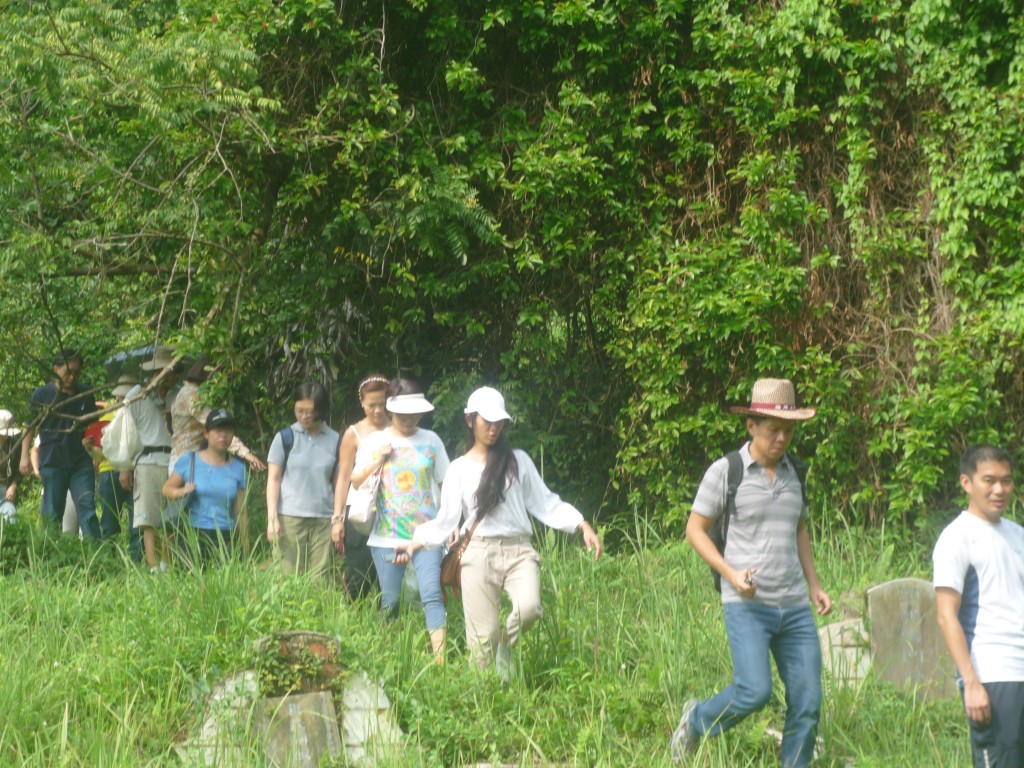
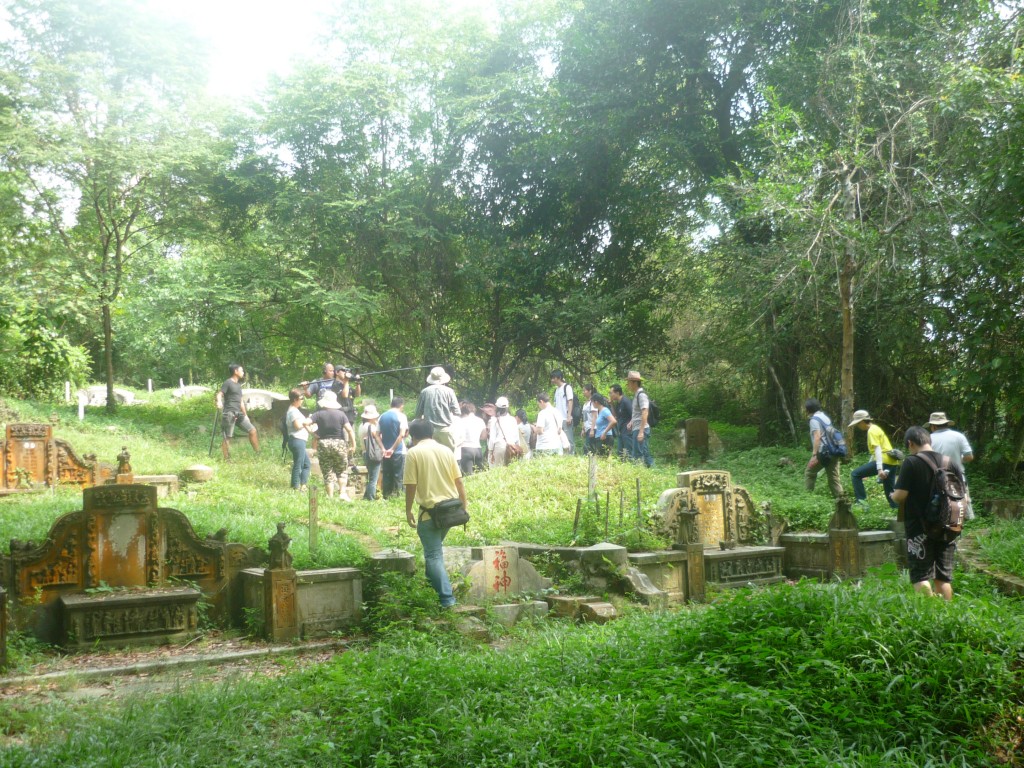
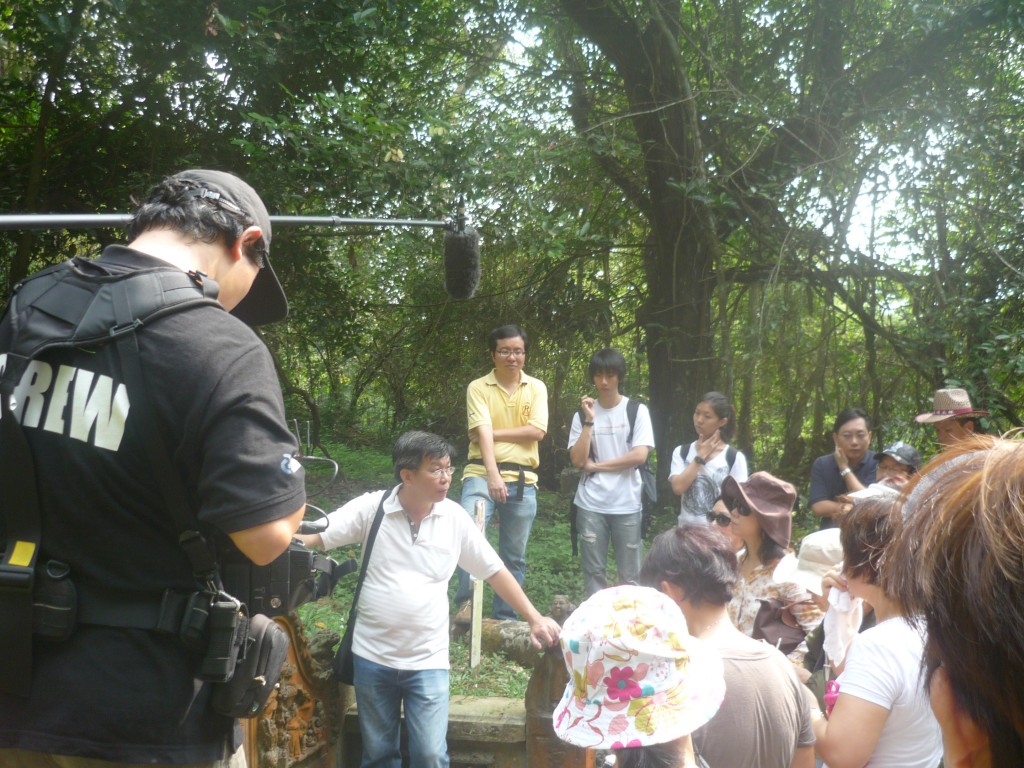


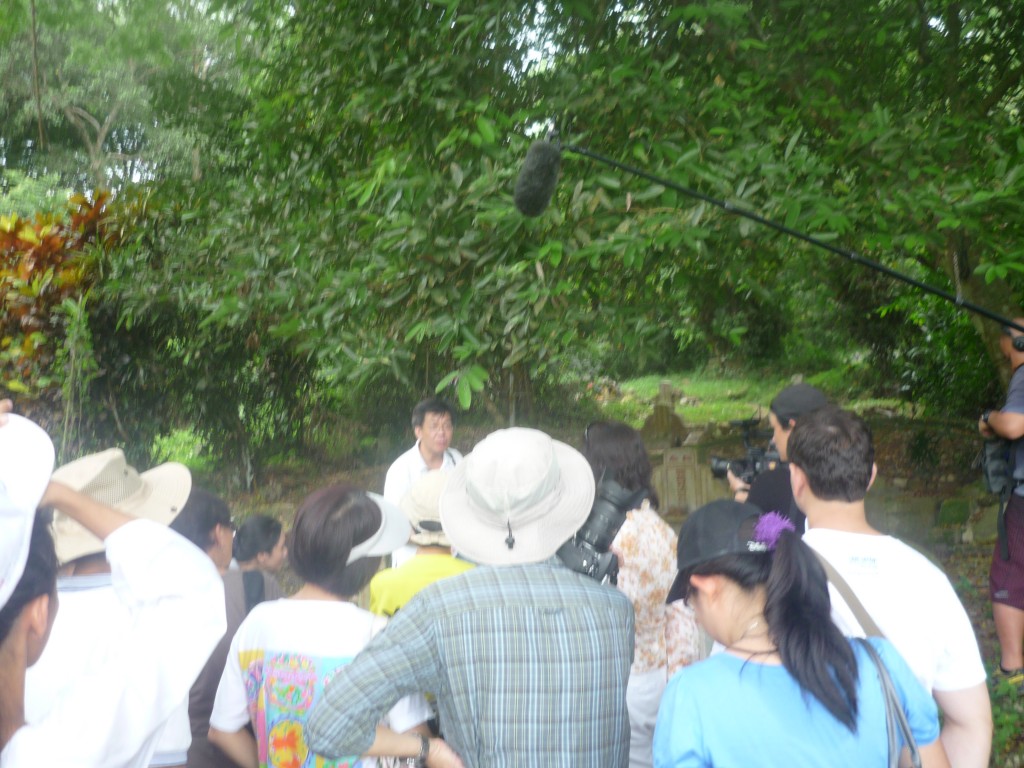
Recent Comments